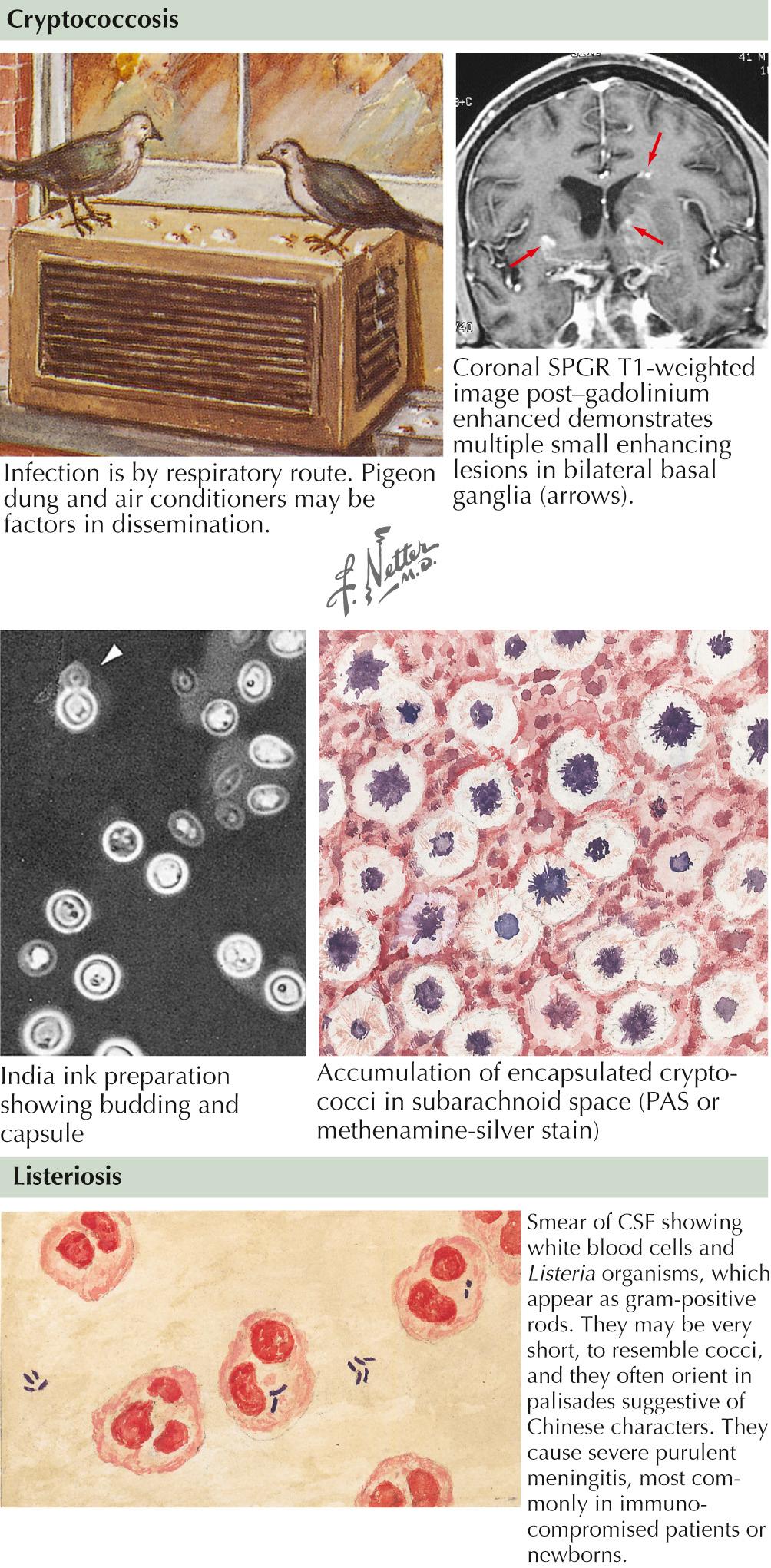Physical Address
304 North Cardinal St.
Dorchester Center, MA 02124
Immunocompromised hosts are susceptible to a wide range of neurologic infections, which include both opportunistic infections and those typically found in normal hosts. The risk for particular infections is related to a number of factors including the type of immune suppression, the duration of immune compromise, and geographic or epidemiologic risk factors. For example, the infection risk profile of a human immunodeficiency virus and acquired immunodeficiency syndrome (HIV/AIDS) patient with CD4 (cluster of differentiation 4) T cell count less than 100 cells/µL is different from the risk profile of a patient taking low-dose chronic corticosteroids. Immunocompromised patients often have more blunted clinical presentations based on the degree of immunosuppression, but remain at risk for more severe manifestations compared to nonimmunocompromised hosts. They are also more likely to have multiple infections, which can make diagnosis difficult.
Listeria monocytogenes is a gram-positive rod that is found widespread in the environment, but primarily in soil and decaying food. It is transmitted via oral consumption and has pathologic connotations in the immunocompromised, pregnant women, neonates, and the elderly.
This organism must always be suspected in patients with epidemiologic risk factors such as long-term corticosteroid use who develop acute meningoencephalitis. Neurologic presentation can be variable, with a significant portion of those with central nervous system (CNS) infection not displaying classic meningeal signs. In addition to headache, fever, and meningismus, listeriosis can lead to focal neurologic signs, ataxia, cranial nerve palsies, and seizure. Brain abscesses are less common, but have been noted. Apart from CNS manifestations, listeriosis causes gastroenteritis and a sepsis syndrome of unclear etiology.
Cerebrospinal fluid (CSF) identification of gram-positive rods in association with a polymorphonuclear leukocytosis and a concomitant low CSF glucose level are the cornerstones to recognition of this uncommon form of bacterial meningitis ( Fig. 48.1 ). Frequently, blood cultures will also be positive. MRI findings of isolated rhombencephalitis in the appropriate clinical scenario are suggestive of listeriosis.

Ampicillin or penicillin and synergistic gentamicin are the treatments of choice. In penicillin-allergic patients, trimethoprim-sulfamethoxazole is an alternative, although penicillin desensitization is preferable.
Nocardia species are filamentous, gram-positive branching rods in the actinomycetes group. The most common species found to cause infection are in the Nocardia asteroides group. They are normally present in soil and water environments. Infection is more associated with chronic glucocorticoid use and organ transplantation than HIV/AIDS.
Primary nocardiosis usually involves the lung, which is the route of inoculation. Due to specific affinity for neural tissue, infection can spread to the CNS where it can lead to brain abscess without any predilection for specific location. Predominant symptoms include fever, headache, and seizure, rather than meningeal signs. Pulmonary disease even in the absence of neurologic symptoms should prompt CNS imaging in immunocompromised patients.
Become a Clinical Tree membership for Full access and enjoy Unlimited articles
If you are a member. Log in here